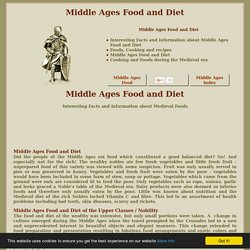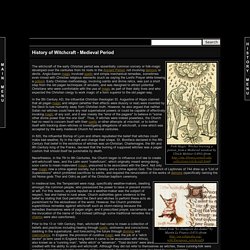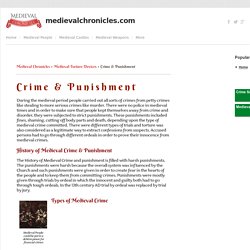

The Lifestyle of Medieval Peasants. The lifestyle of peasants in Medieval England was extremely hard and harsh.

Many worked as farmers in fields owned by the lords and their lives were controlled by the farming year. Certain jobs had to be done at certain times of the year. Their lives were harsh but there were few rebellions due to a harsh system of law and order. Ploughing – a vital farm job The peasants were at the bottom of the Feudal System and had to obey their local lord to whom they had sworn an oath of obedience on the Bible. The one thing the peasant had to do in Medieval England was to pay out money in taxes or rent. Peasants also had to work for free on church land. The Domesday Book meant that the king knew how much tax you owed and you could not argue with this – hence why it brought ‘doom and gloom’ to people.
After you had paid your taxes, you could keep what was left – which would not be a great deal. Peasants lived in cruck houses. What a cruck house may have looked like – minus the wattle and daub. Middle Ages Food and Diet. Interesting Facts and Information about Medieval Foods Middle Ages Food and DietDid the people of the Middle Ages eat food which constituted a good balanced diet?

No! And especially not for the rich! The wealthy nobles ate few fresh vegetables and little fresh fruit - unprepared food of this variety was viewed with some suspicion. Fruit was only usually served in pies or was preserved in honey. Medieval Period - History of Witchcraft - Witchcraft. The witchcraft of the early Christian period was essentially common sorcery or folk-magic developed over the centuries from its roots in the Ancient Period, not involving demons or devils.

Anglo-Saxon magic involved spells and simple mechanical remedies, sometimes even mixed with Christian religious elements (such as saying the Lord's Prayer while brewing a potion). Early Christian methodology, involving saints and divine relics, was just a short step from the old pagan techniques of amulets, and was designed to attract potential Christians who were comfortable with the use of magic as part of their daily lives and who expected the Christian clergy to work magic of a form superior to the old pagan way.
In the 5th Century AD, the influential Christian theologian St. Augustine of Hippo claimed that all pagan magic and religion (whether their effects were illusory or real) were invented by the Devil to lure humanity away from Christian truth. Medieval Crime & Punishment. During the medieval period people carried out all sorts of crimes from petty crimes like stealing to more serious crimes like murder.

There were no police in medieval times and in order to make sure that people kept themselves away from crime and disorder, they were subjected to strict punishments. These punishments included fines, shaming, cutting off body parts and death, depending upon the type of medieval crime committed. There were different types of trials and torture was also considered as a legitimate way to extract confessions from suspects. Accused persons had to go through different ordeals in order to prove their innocence from medieval crimes. Crime and Punishment in the Middle Ages. Written by Tim Nash History The middle ages was a time of severe punishment and harsh torture for crimes that today would seem trivial.

People were beheaded and limbs cut off, vagabonds were often whipped and chained in stocks. People lived in a state of fear thinking they would be the next victim. Even the Catholic Church used torture and imprisonment to obtain confessions from people regardless of whether they were guilty. Torture and punishment has existed for thousands of years. People often had their right hand cut of for stealing, people were beaten, burned alive, stretched on a rack and women committing adultery were drowned. Suffocating people in water was a common practice. During Tudor times English laws was practically geared toward torture.
Middle Ages. Law and Order of the Middle Ages. Law and Order of the Middle Ages (Life) Keeping order during the Middle Ages was especially difficult.

Peasants, who were oppressed by the feudal system, frequently revolted; there were numerous spies and assassins working to wreak havoc in another kingdom, some killed their neighbors to steal their possessions, economical problem opened the way for thieves and there were numerous blasphemers who had to be taken care of. Keeping law and order in the Middle Ages was not so easy as today, because there was no democracy and therefore the law was biased. In a village, they chose a man who kept law and order: The constable. If it wasn't for the harsh laws that existed during the Middle Ages, chaos would have prevailed throughout the epoch. Ordeal by Combat Banishment was a very common variant of the ordeal by combat described below. sometimes the victims mother or father (if they were still alive) were forced to fight for the accused or against the accused.
Ordeal by Fire Ordeal by Bread. Effects of the Crusades. Medieval Food. Health and Medicine in Medieval England - History Learning Site. Health and medicine in Medieval England were very important aspects of life.

For many peasants in Medieval England, disease and poor health were part of their daily life and medicines were both basic and often useless. Towns and cities were filthy and knowledge of hygiene was non-existent. The Black Death was to kill two thirds of England’s population between 1348 and 1350. In 1349, Edward III complained to the Lord Mayor of London that the streets of the city were filthy: No one knew what caused diseases then.
Other theories put forward for diseases included “humours”. Astronomers blamed the planets going out of line As important, no-one knew how diseases spread – the fact that people lived so close together in both villages and towns meant that contagious diseases could be rampant when they appeared; as happened with the Black Death. Physicians were seen as skilled people but their work was based on a very poor knowledge of the human anatomy. Operations were carried out by ‘surgeons’.